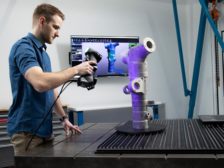Darryl Seland
Darryl Seland is Editor-in-Chief of Quality magazine. He can be reached at [email protected].
ARTICLES
The Advantages of Automated SPC Software, by Industry
The advantages to SPC can be applied differently, depending on the field you’re in.
June 14, 2021
Why Yesterday’s Data Collection Systems Don’t Support Overall Equipment Effectiveness
Increasing the pace, capacity, and precision of measurement and inspection data collection is the first step in OEE.
June 11, 2021
How Process Control Saves Time and Money
Adding automation to manufacturing process control systems enables a holistic factory view.
June 10, 2021
Stay in the know with Quality’s comprehensive coverage of
the manufacturing and metrology industries.
eNewsletter | Website | eMagazine
JOIN TODAY!Copyright ©2024. All Rights Reserved BNP Media.
Design, CMS, Hosting & Web Development :: ePublishing







